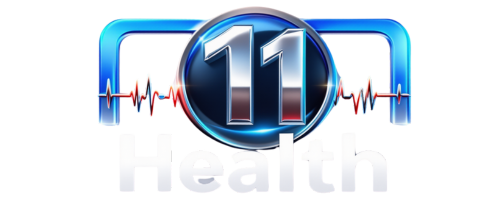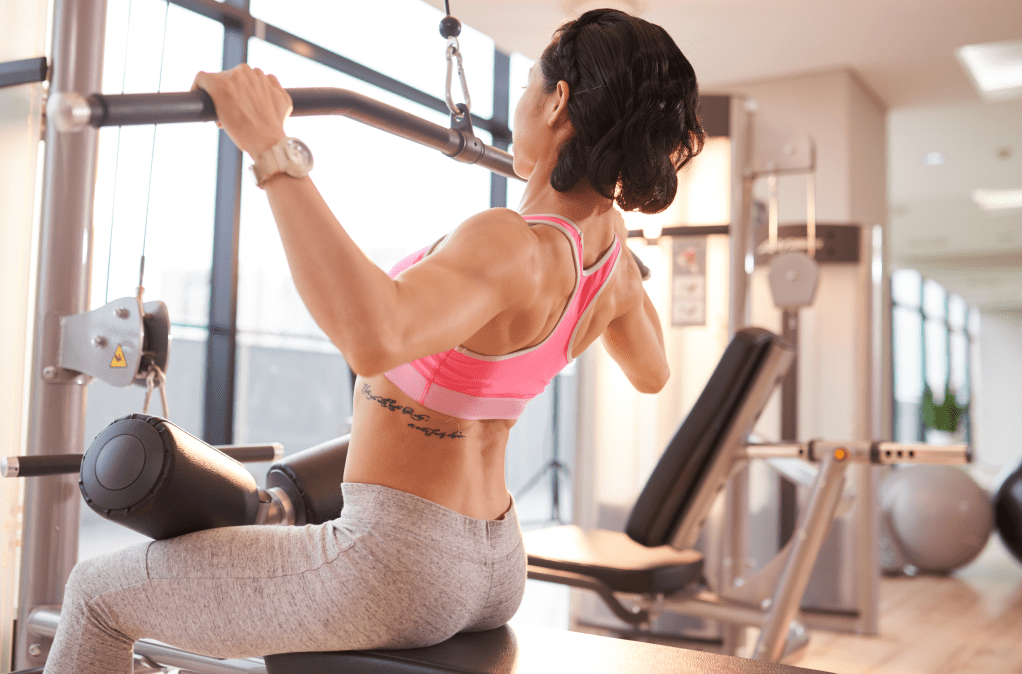You may have been going to the gym for some time, but you haven’t seen the results that you’ve been hoping for. Or, you have just started a fitness program, and you’re wondering how to maximize your results. The familiar phrase, “work smarter, not harder,” rings true at the gym. A smart post-workout recovery may be the key to getting the results that you want, without spending all your free time at the gym. If you practice smart post-workout recovery tactics, then you can relieve or prevent soreness, increase your muscle gains, and shorten the wait between workouts. What you do after your workout is just as important as your workout itself. [This article, “Post-Workout Recovery for Beginners,” was originally published in HealthXWire]
How you build muscle
When you push your muscles with exercise, you create tiny tears in the muscle tissue. When your body repairs these tears, it overcompensates, leading to muscle growth. If your muscles do not recover and repair properly, then you won’t gain muscle mass, and you may even notice a loss of muscle strength and a lack of progress in your fitness program. Muscle growth doesn’t occur during your workout; it happens during the rest and recovery period following your workout. If you don’t recover properly, an accumulation of muscle tears can also put you at risk of muscle strains or pulled muscles. Pulled muscles can be mildly uncomfortable but ruptures may require surgery.
What happens after your workout
While muscle fibers are damaged during a workout, other effects contribute to the feelings of soreness and weakness you may experience after exercise. Stored fuel called glycogen is depleted in your muscles, and inflammation begins to set in. Pain is perhaps the most noticeable effect of a workout, and if you perform unfamiliar or intense exercise, you may experience delayed-onset muscle soreness (DOMS). Symptoms of DOMS include muscle pain, weakness, swelling, stiffness, and restriction of movement. DOMS usually manifests after training (Post-workout) if you haven’t exercised for some time, if you have performed an unfamiliar exercise, or if you have over-exerted yourself. It generally is at a peak about 48 hours after a workout.
If you can relieve or prevent pain, you are more likely to stay on track with your fitness goals. Less pain also means greater flexibility and range of motion. Because your muscles need time to repair, rest days should be built into any fitness plan. However, this does not mean staying on the couch. On rest days, you can perform light exercise such as walking, hiking, biking, or swimming, and some light activity actually enhances recovery.
A good post-workout cool-down will relieve stress and help prevent injury. Doing 10-15 minutes of light cardio can help you gradually stabilize your heart rate and blood pressure. It will also prevent blood from pooling in your extremities, which could lead to lightheadedness. In addition, light aerobic activity after exercise can help you to get rid of metabolic byproducts through perspiration, helping to prevent pain. If you do not cool down, then lactic acid may pool in your muscles, causing soreness. Either a light jog or a walk on a treadmill can serve as an effective cool-down.
Remember to eat protein and carbohydrates
When you exercise, your body loses the nutrient stores that it needs to build and repair muscles. Since protein is the building block for muscle, consuming this macronutrient after exercise provides your body with the basic materials needed to help you come back to your next workout stronger. Whey protein, found naturally in milk, contains a high percentage of amino acids and is readily absorbed. Whey protein supplementation has been shown to help athletes build muscle mass and recover faster from training, but you can also consume protein as soy or in high-protein foods such as meat, poultry, or fish. The recommended amount of protein to consume per day for muscle building is 0.5-0.9 grams per pound of body weight. You can also try a protein snack in the evening to help promote muscle growth as you sleep.
Eating carbohydrates after a workout can also help you recover, as this practice helps restore glycogen levels. When you eat carbohydrates, your body moves glucose from your blood into your cells. Excess glucose molecules are linked together to form glycogen, which serves as stored energy. Glycogen provides the fuel for short-duration and intense exercise, and if glycogen isn’t restored, then you may experience soreness and muscle fatigue. It is recommended to consume a post-workout snack with a 3 or 4:1 protein to carbohydrate ratio 30-45 minutes post-workout to replenish the nutrients you need to repair and build muscle. This healthy habit will also help you feel energetic and ready for the rest of your day.
Branched-chain amino acids (BCAAs): fuel for your muscles
BCAAs get their name from their chemical structure, and they make up three of the nine essential amino acids. These amino acids are considered essential as the body cannot make them on its own; and must be consumed in food or as supplements. Natural sources of BCAAs include animal proteins like meat, eggs, milk, and fish. Supplementing with BCAAs can help prevent muscle breakdown, reduce DOMS, boost muscle protein synthesis, fuel muscles during training, and reduce fatigue during exercise. BCAA supplementation is best for people who perform endurance exercise, people entering a new phase of an intense training program, or beginners just starting a fitness regimen.
Hydrate with electrolytes
Sweating during exercise can dehydrate you, so it helps to have fluids with you at the gym. Consuming healthy fluids pre- and post-workout can help regulate your body temperature, lubricate joints, and prevent muscle cramps and dizziness. You also need proper hydration to stabilize blood pressure and heartbeat after a workout. Furthermore, your body performs much more efficiently in transporting nutrients and oxygen to cells if you consume adequate fluids. If you feel thirsty, you are already dehydrated, so sip fluids gradually before you reach that point. If your urine is light in color, then you know that you are properly hydrated; darker urine is a sign that you need to drink more.
While plain water will hydrate you, it’s important to replace electrolytes lost through sweating. Electrolytes are minerals such as sodium, potassium, calcium, and magnesium that all affect muscle performance. Low electrolyte levels can cause muscle cramps, muscle weakness, headaches, and dizziness. Coconut water, watermelon water, other fruit juices, and a variety of sports drinks contain these essential minerals. Food sources include almonds, peanuts, and avocadoes.
Get spicy with turmeric
While anti-inflammatory ingredients can reduce soreness and muscle damage, OTC nonsteroidal anti-inflammatory drugs such as ibuprofen or aspirin (NSADs) may slow the development of muscle strength, even though they reduce soreness in the short term. Therefore, it’s better to try a natural anti-inflammatory ingredient such as turmeric. Curcumin, the active ingredient in turmeric that gives it its characteristic yellow color, may be beneficial for muscle recovery due to its antioxidant and anti-inflammatory effects.
The physical stress of exercise causes the release of free radicals in the body, which can damage cells and DNA, leading to exhaustion, muscle degradation, or even increased susceptibility to injury. As a powerful antioxidant, turmeric removes free radicals, reducing muscle soreness and muscle damage. Athletes who supplement with turmeric may recover faster from hard workouts and then be able to train more consistently at higher levels, boosting overall performance. However, exercisers at every level can benefit from turmeric supplementation, as faster recovery can help any fitness enthusiast to train longer, harder, and more consistently.
Turmeric has long been studied for its medicinal benefits, particularly its capacity to alleviate pain. Some studies of supplemental curcumin have shown improvements in knee arthritis pain after just eight weeks. Curcumin has also shown benefits for people with joint pain, Irritable Bowel Syndrome (IBS), heartburn, and kidney problems. Used in traditional medicines for hundreds of years, turmeric has also been investigated for its positive effects on metabolic syndrome, anxiety, and high cholesterol.
Boost your recovery with a dose of caffeine
Caffeine interferes with the activity of adenosine, a chemical released in the body after injury that activates pain receptors. Therefore, consuming caffeine pre- or post-workout can reduce DOMS. Furthermore, when combined with carbohydrates after a workout, caffeine can help promote muscle glycogen synthesis. According to a 2019 study, caffeine consumption 24 and 48 hours after intense exercise reduced DOMS but and helped with muscle power recovery. The dose of caffeine necessary to achieve this effect is about 345 mg for a 150-pound person. An 8 oz. cup of coffee typically contains 95 mg of caffeine. If you consume caffeine before or during your workout, you can also count on this stimulant to delay fatigue.
Many popular energy drinks promise a hit of caffeine, but these products are often unhealthy due to other ingredients such as artificial sweeteners, added sugar, or sodium. LifeAid, a company founded in 2011, offers a sports recovery beverage called FITAID that contains 200 mg of clean caffeine from green tea, without any of these harmful ingredients. FITAID also contains BCAAs, electrolytes, and turmeric to promote faster recovery so that you can hit the gym again sooner without pain. Perhaps the cleanest energy drink on the market, FITAID delivers the benefits of a functional beverage but also contains the caffeine that gym-goers want. FITAID contains about 15 calories per can.
You could also try Mati Sparkling Organic Energy Drink, made with guayusa tea. With 115 mg of caffeine per 12-oz bottle, this product contains phenolic antioxidants to help speed your recovery. The unsweetened version of this organic energy drink contains zero calories and comes with a short ingredient list.
Sleep: the most essential ingredient
Your biggest gains don’t necessarily happen at the gym; they happen while you sleep. Human growth hormone (HGH), produced in the pituitary gland and released primarily during deep sleep, plays an important role in muscle growth and repair. You need to get proper sleep to reach your fitness goals, as sleep deprivation can inhibit the protein synthesis needed to repair damaged muscles. Most people need about 7-9 hours per night, but if you exercise intensely, then you need even more sleep. Some professional athletes sleep as much as ten hours per night. Rest is also important for safety, as you may lose your form or take a wrong step if you are overtired. In addition, sleep deprivation can lead to slower reaction times, increased pain sensitivity, reduced concentration, and immune system suppression. Try taking a break from screens at least an hour before bedtime, investing in a comfortable mattress, and keeping your bedroom cool.
Creatine for mass, strength, and power
Creatine is a compound produced naturally in the body that is made up of three amino acids. After it is converted to phosphocreatine, this compound can donate phosphate to help form Adenosine Triphosphate (ATP). Since ATP is the energy that powers the body and movement during exercise, creatine supplementation may increase muscle power and help you to perform more repetitions for longer. The end result is that you will build more muscle over time.
Creatine supplementation in combination with carbohydrates can also promote glycogen storage in muscles, and we know that restoring glycogen levels is important for muscle recovery. Creatine has been shown to reduce muscle soreness, muscle damage, and inflammation after training. In addition, this helpful compound can help you to hydrate during exercise, increasing tolerance to heat. The most common side effect of creatine supplementation is short-term water retention, though this effect may not persist in the long term. Creatine is best for people who want to increase muscle mass, strength, and power.
LifeAid offers naturally sweetened drinks containing bonded creatine, such as FITAID RX and FITAID RX ZERO. These products are free of artificial sweeteners and sodium found in other popular recovery drinks. They offer a healthy choice to gym-goers looking for a high creatine content with a natural feel and taste. Each can contains 1,000 mg creatine plus a light dose of caffeine. Bang energy drinks also promise creatine content as part of their formula, but each 16-ounce can contains only about 4-32 mg of creatine. With 300 mg of caffeine and BCAAs, this popular beverage is sweetened with sucralose.
Reaching your goals with smart post-workout recovery
While the best way to maximize post-workout recovery is with proper nutrition and a good night’s rest, certain supplements will have a positive effect, especially if you are already taking care of the basics. Reducing inflammation, replenishing glycogen, and adding protein building blocks can help you repair your muscles and build mass during your recovery period. You can also minimize or even prevent delayed-onset muscle soreness with smart post-workout recovery. The goal of smart recovery is to be ready to train again as soon as possible; and maximize muscle gain and power. When you experience less pain and your muscles are fueled for optimal strength, you will be prepared to reach that goal. Not only will you lower your risk of injury, but you will see your best results.
Disclaimer
Important Note: The information contained in this article is for general informational purposes only, and should not be construed as health or medical advice, nor is it intended to diagnose, prevent, treat, or cure any disease or health condition. Before embarking on any diet or program of nutritional supplementation, it is advisable to consult your healthcare professional in order to determine its safety and probable efficacy in terms of your individual state of health.


